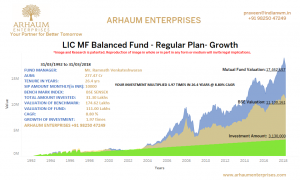Compared to other allowable investments, ELSS funds are uniquely advantageous. There are two reasons for this. One is that ELSS funds are unique in being the only viable tax-saving investment within this R1.5 lakh limit that brings the benefits of equity returns. Sure, there are two other options that give equity-linked returns- ULIPs and the National Pension System (NPS). However, ULIPs have long lock-in–at least ten years–coupled with high costs and poor transparency. The NPS is a retirement solution rather than a savings one. For one, it has only partial exposure to equity, and secondly, it has a very long lock-in period that effectively extends till retirement age. There’s no way a three year lock-in product like the ELSS can be compared to the NPS.
Subscribe to the free Value Research Insight newsletter
ELSS funds actually have the best combination of much lower cost than ULIPs, 100 per cent equity as well as a reasonable lock-in period of just three years. Beyond this, ELSS funds have another hidden benefit. For many beginner investors, it makes an excellent gateway product in which they get the first taste of equity investing and of mutual funds. You end up investing in these funds because the tax-savings attracts you and it has the shortest lock-in.
This experience encourages investors to invest in equity mutual funds over and above their tax-saving needs. Once you have a taste of long-term equity returns, then you end up trying other types of equity investments as well.
For the best way to choose ELSS funds, one should plan ahead and not wake up to tax-saving investments late in the year. For a variety of reasons, savers tend to make hasty and poor decisions while choosing their tax-saving investments.
For one, many of those who wait till the end of the year are those who don’t make any discretionary investments other than the tax-savings. They’re inexperienced in this whole activity and make a foray into investing only once a year, generally to fall prey to the first salesman who comes along. As long as an investment saves tax, they feel that the immediate job is done.
This approach proves expensive in the long run. A good tax-saving investment must be an investment first and a tax-saver later. For most people, the investment that should make most sense is in an ELSS fund. This is because salary-earners generally have some of the permitted amount going into fixed income through PF deductions and to balance that, equity is advisable.
There’s a widespread misconception that equity is too risky for older investors or for retirees and therefore they should not use ELSS. Nothing could be further from the truth. Everyone who has taxable income should invest in ELSS to save taxes.
Even for people who have a reasonable size of savings, the main problem in retirement planning in India is to compensate for inflation. The reality is that our savings are eaten away at a ferocious rate by the declining purchasing power of the rupee. Over the average 25-year period during which a retiree needs income, one can expect prices to rise by about eight times.
Moreover, some of the goods and services that could form an outsize part of a retiree’s expenses–healthcare, for example–have seen even higher rates of inflation.
Equity investment is a higher risk over the short term. However, for investment periods of three to five years or longer, the risk on equity investments is considerably lower. In fact, when you take inflation into account, it is bank FDs and similar deposits that are suboptimal for the retiree because of inflation.
Of course, like all equity investments, the best way of investing in ELSS funds is through monthly SIPs throughout the year. That’s also the way to avoid any last minute rush. At the beginning of every year, estimate the amount you have left over from the R1.5 lakh limit after statutory deductions, divide it by 12 and start an SIP.


